【工业场景】用YOLOv8实现行人识别
本文以YOLOv8为基础,设计研究了基于YOLOv8的行人识别任务,提取各种场景下的行人自动检测,包含完整数据介绍、训练过程和测试结果全流程。
若需要完整数据集和源代码可以私信。
目录
若需要完整数据集和源代码可以私信。
🌷🌷1.数据集介绍
👍👍2.行人识别实现效果
🍎🍎3.YOLOv8识别抽烟算法步骤
🍋3.1数据准备
🍋3.2模型选择
🍋3.3加载预训练模型
🍋3.4输入数据组织
🍭🍭4.目标检测训练代码
⭐4.1训练过程
⭐4.2训练结果
🏆🏆5.目标检测推理代码
整理不易,欢迎一键三连!!!送你们一条美丽的--分割线--
🌷🌷1.数据集介绍
行人检测数据集总共包含78298张样本数据,其中训练集77706张,验证集8592张,部分影像展示如下:
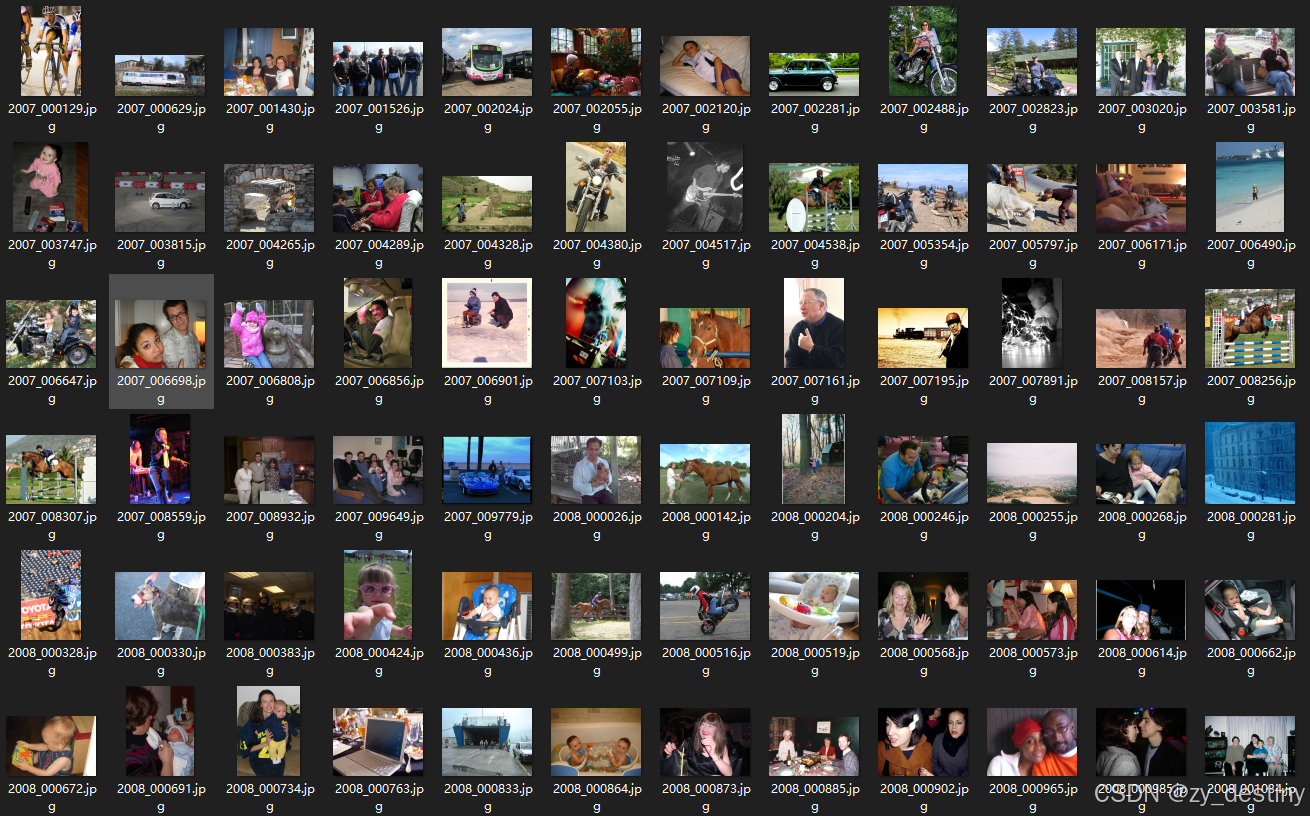
label为txt格式的yolo目标检测格式,示例txt文件内容为:

样本数据包含1类,表示行人。
训练验证比例可以自行调整,这里不赘述。
👍👍2.行人识别实现效果
YOLOv8识别行人的预测效果如下:
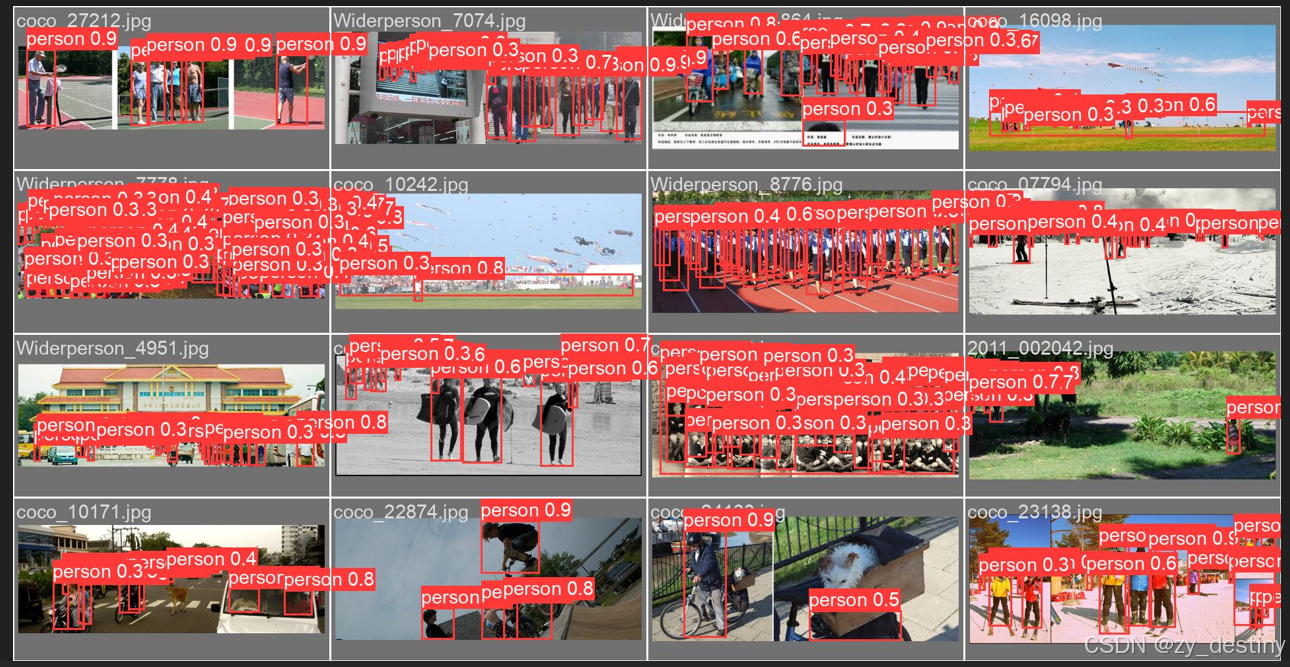
识别精度为80+%,以AP50来计算。
🍎🍎3.YOLOv8识别抽烟算法步骤
通过目标检测方法进行抽烟识别的方法不限,本文以YOLOv8为例进行说明。
🍋3.1数据准备
抽烟检测数据集总共包含78298张样本数据,其中训练集77706张,验证集8592张。
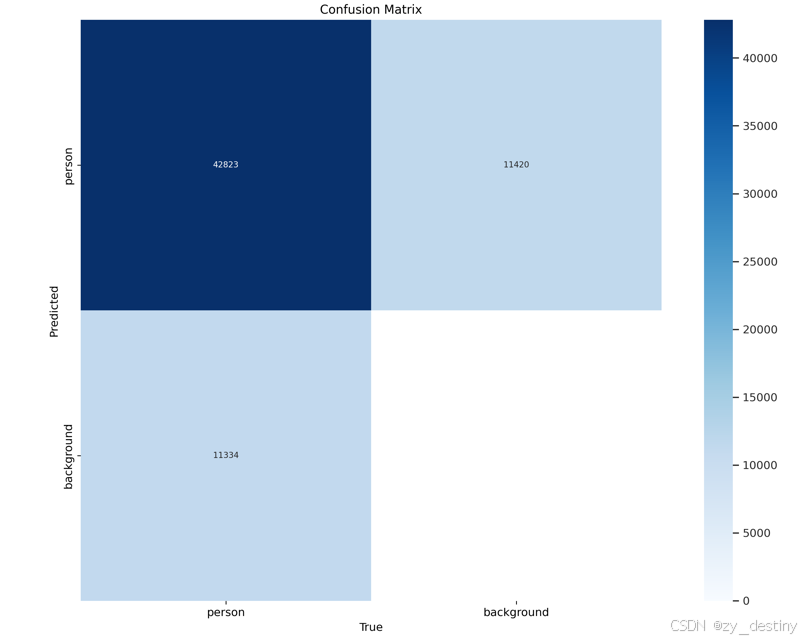
从混淆矩阵来看,正样本占比较大。
数据组织:
----people_dataset----images----train----val----labels----train----valimages/train文件夹如下:
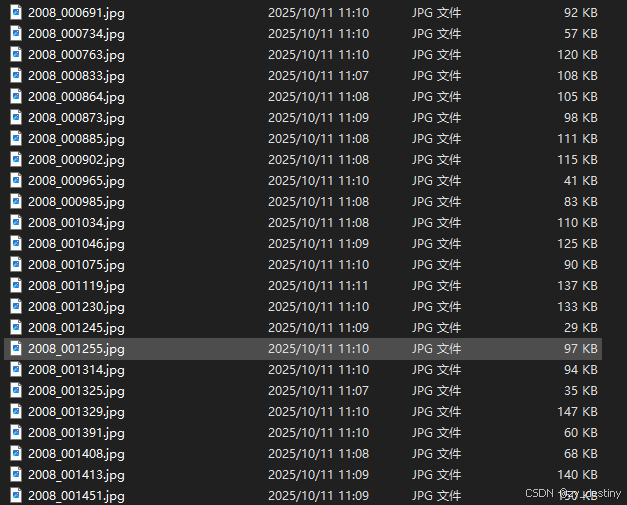
labels/train文件夹如下:
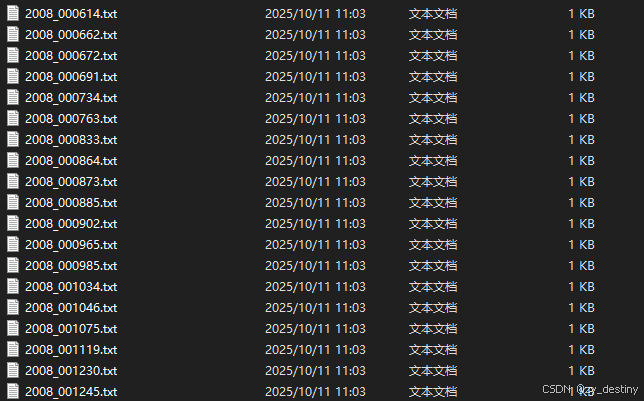
模型训练label部分采用的是YOLO格式的txt文件,所以如果自己的数据集是xml格式或者json格式需要进行转换哦,转换可移步这里。
具体txt格式内容如1.数据集介绍中所示。
🍋3.2模型选择
以YOLOv8m为例,模型选择代码如下:
from ultralytics import YOLO# Load a model
#model = YOLO('yolov8l.yaml') # build a new model from YAML
#model = YOLO('yolov8l.pt') # load a pretrained model (recommended for training)
model = YOLO('yolov8l.yaml').load('yolov8l.pt') # build from YAML and transfer weights
其中yolov8l.yaml为./ultralytics/cfg/models/v8/yolov8l.yaml,可根据自己的数据进行模型调整,打开yolov8l.yaml显示内容如下:
# Ultralytics YOLO 🚀, AGPL-3.0 license
# YOLOv8 object detection model with P3-P5 outputs. For Usage examples see https://docs.ultralytics.com/tasks/detect# Parameters
nc: 1 # number of classes
scales: # model compound scaling constants, i.e. 'model=yolov8n.yaml' will call yolov8.yaml with scale 'n'# [depth, width, max_channels]n: [0.33, 0.25, 1024] # YOLOv8n summary: 225 layers, 3157200 parameters, 3157184 gradients, 8.9 GFLOPss: [0.33, 0.50, 1024] # YOLOv8s summary: 225 layers, 11166560 parameters, 11166544 gradients, 28.8 GFLOPsm: [0.67, 0.75, 768] # YOLOv8m summary: 295 layers, 25902640 parameters, 25902624 gradients, 79.3 GFLOPsl: [1.00, 1.00, 512] # YOLOv8l summary: 365 layers, 43691520 parameters, 43691504 gradients, 165.7 GFLOPsx: [1.00, 1.25, 512] # YOLOv8x summary: 365 layers, 68229648 parameters, 68229632 gradients, 258.5 GFLOPs# YOLOv8.0n backbone
backbone:# [from, repeats, module, args]- [-1, 1, Conv, [64, 3, 2]] # 0-P1/2- [-1, 1, Conv, [128, 3, 2]] # 1-P2/4- [-1, 3, C2f, [128, True]]- [-1, 1, Conv, [256, 3, 2]] # 3-P3/8- [-1, 6, C2f, [256, True]]- [-1, 1, Conv, [512, 3, 2]] # 5-P4/16- [-1, 6, C2f, [512, True]]- [-1, 1, Conv, [1024, 3, 2]] # 7-P5/32- [-1, 3, C2f, [1024, True]]- [-1, 1, SPPF, [1024, 5]] # 9# YOLOv8.0n head
head:- [-1, 1, nn.Upsample, [None, 2, "nearest"]]- [[-1, 6], 1, Concat, [1]] # cat backbone P4- [-1, 3, C2f, [512]] # 12- [-1, 1, nn.Upsample, [None, 2, "nearest"]]- [[-1, 4], 1, Concat, [1]] # cat backbone P3- [-1, 3, C2f, [256]] # 15 (P3/8-small)- [-1, 1, Conv, [256, 3, 2]]- [[-1, 12], 1, Concat, [1]] # cat head P4- [-1, 3, C2f, [512]] # 18 (P4/16-medium)- [-1, 1, Conv, [512, 3, 2]]- [[-1, 9], 1, Concat, [1]] # cat head P5- [-1, 3, C2f, [1024]] # 21 (P5/32-large)- [[15, 18, 21], 1, Detect, [nc]] # Detect(P3, P4, P5)主要需要修改的地方为nc,也就是num_class,此处数据集类别为1类,所以nc=1。
如果其他的模型参数不变的话,就默认保持原版yolov8,需要改造模型结构的大佬请绕行。
🍋3.3加载预训练模型
加载预训练模型yolov8l.pt,可以在第一次运行时自动下载,如果受到下载速度限制,也可以自行下载好(下载链接),放在对应目录下即可。
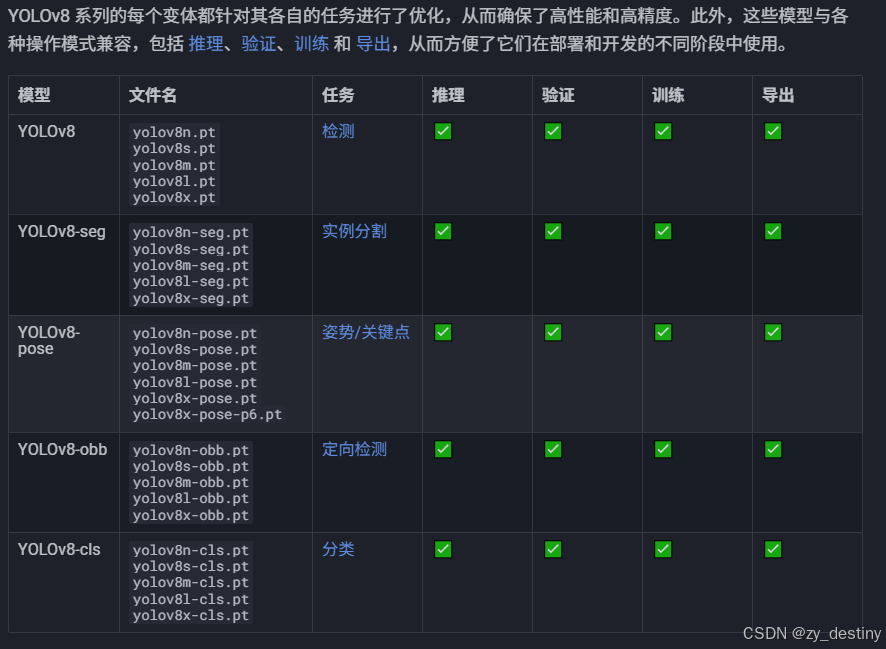
🍋3.4输入数据组织
yolov8还是以yolo格式的数据为例,./ultralytics/cfg/datasets/data.yaml的内容示例如下:
# Train/val/test sets as 1) dir: path/to/imgs, 2) file: path/to/imgs.txt, or 3) list: [path/to/imgs1, path/to/imgs2, ..]
path: ../datasets/coco8 # dataset root dir
train: images/train # train images (relative to 'path') 4 images
val: images/val # val images (relative to 'path') 4 images
test: # test images (optional)# Classes (80 COCO classes)
names:0: person1: bicycle2: car# ...77: teddy bear78: hair drier79: toothbrush这个是官方的标准coco数据集,需要换成自己的数据集格式,此处建议根据自己的数据集设置新建一个people_detect_coco128.yaml文件,放在./ultralytics/cfg/datasets/目录下,最后数据集设置就可以直接用自己的people_detect_coco128.yaml文件了。以我的people_detect_coco128.yaml文件为例:
path: /home/datasets/people # dataset root dir
train: images/train # train images (relative to 'path') 4 images
val: images/val # val images (relative to 'path') 4 images
test: images/test # test images (optional)names:0: person
🍭🍭4.目标检测训练代码
准备好数据和模型之后,就可以开始训练了,train.py的内容显示为:
from ultralytics import YOLO# Load a model
#model = YOLO('yolov8n.yaml') # build a new model from YAML
#model = YOLO('yolov8n.pt') # load a pretrained model (recommended for training)
model = YOLO('yolov8l.yaml').load('yolov8l.pt') # build from YAML and transfer weights# Train the model
results = model.train(data='people_detect_coco128.yaml', epochs=300, imgsz=640)
通常我会选择在基础YOLO模型上进行transfer微调,不会从头开始训练,如果想自己从头开始,可以自行选择第一种方式。这里建议选择第三种。
⭐4.1训练过程
开始训练之后就会开始打印log文件了。如下图所示:
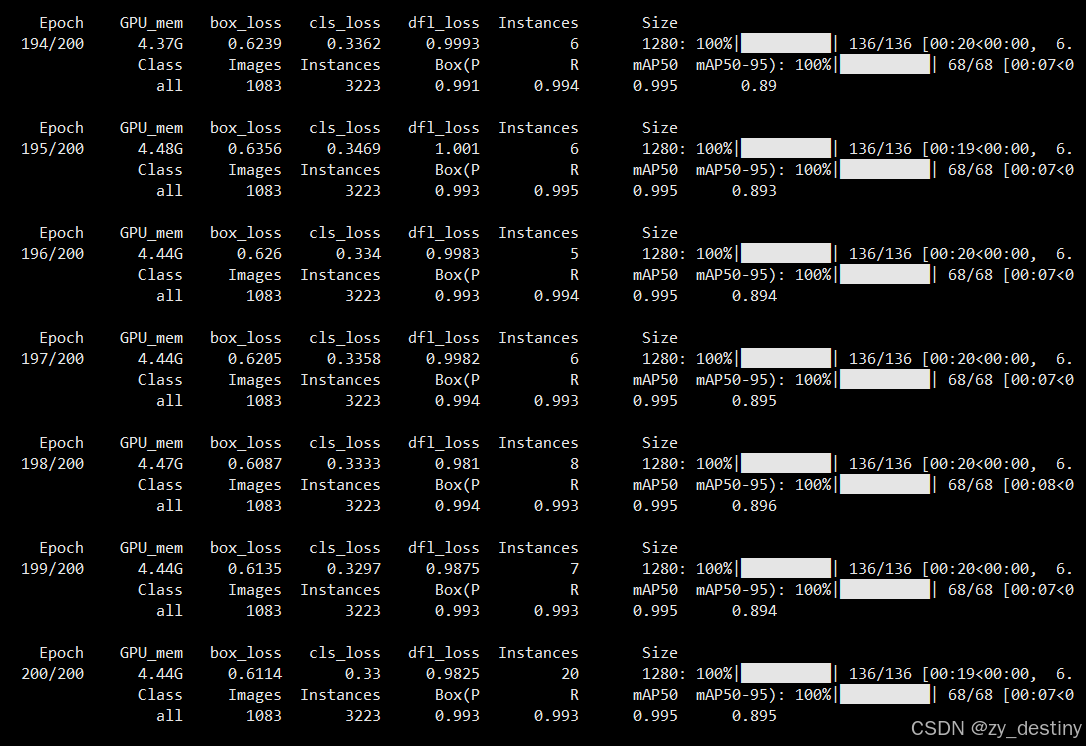
训练完成后会在/run/detect/目录下生成train或者train+数字的文件夹,存放你的训练结果。
⭐4.2训练结果
训练完成后的结果如下:
其中weights文件夹内会包含2个模型,一个best.pth,一个last.pth。

至此就可以使用best.pth进行推理检测是否包含反光衣了。
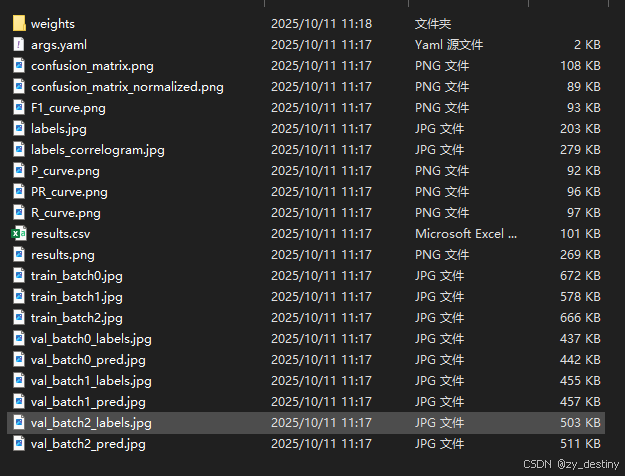
训练精度展示:
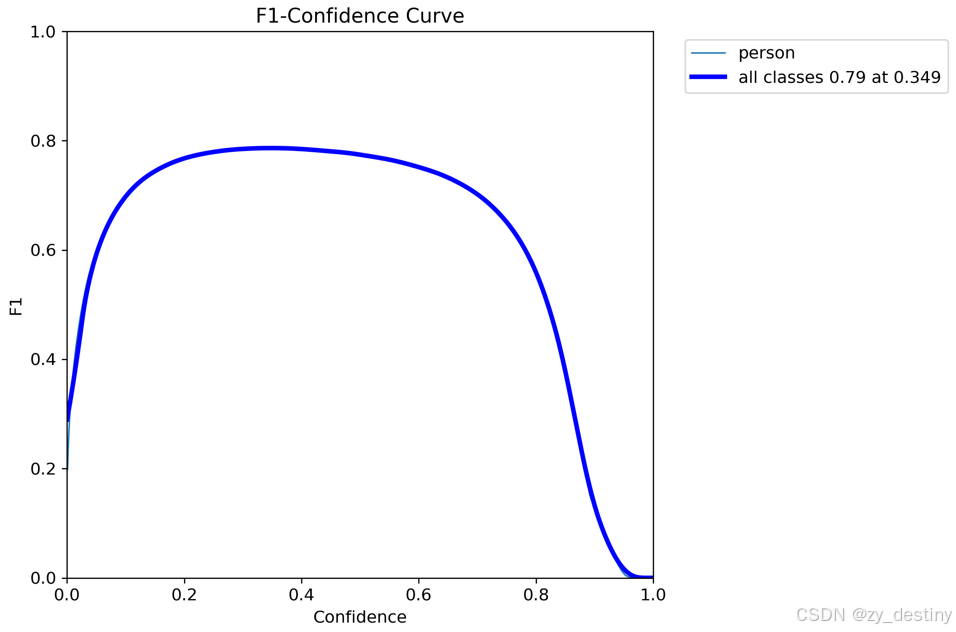
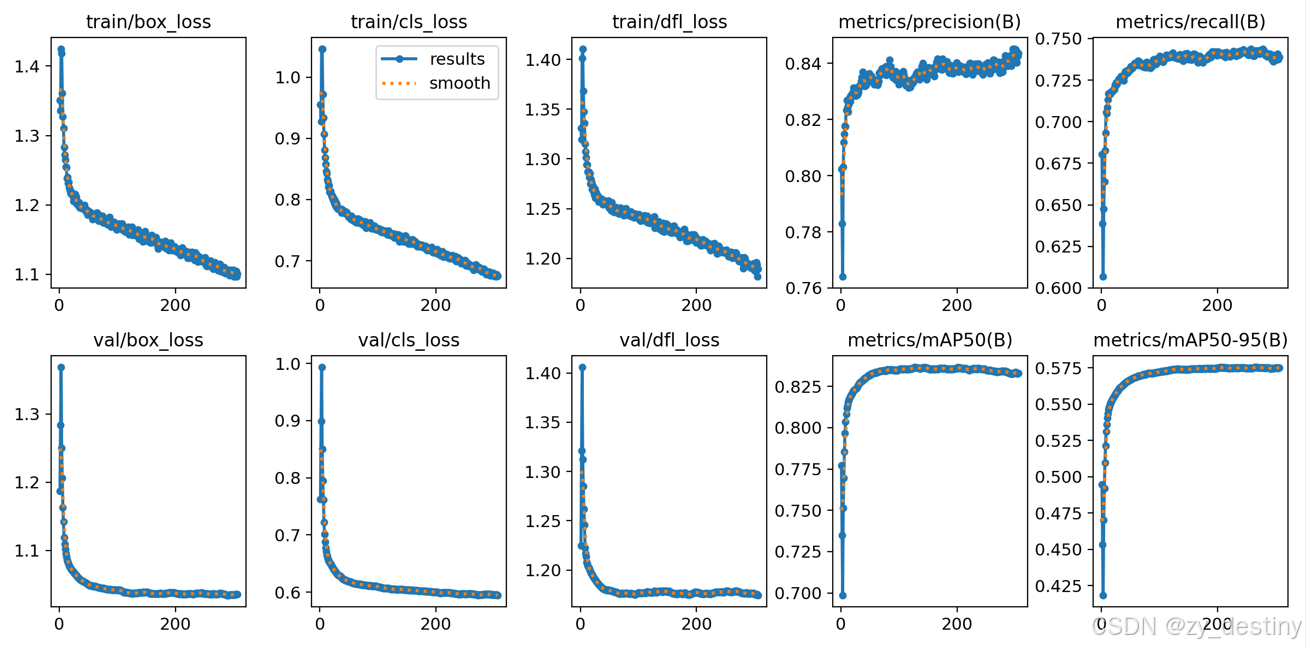
🏆🏆5.目标检测推理代码
批量推理python代码如下:
from ultralytics import YOLO
from PIL import Image
import cv2
import osmodel = YOLO('/yolov8/runs/detect/train5/weights/best.pt') # load a custom model
path = '/home/dataset//images/test/' #test_image_path_dir
img_list = os.listdir(path)
for img_path in img_list:
### =============detect=====================im1 = Image.open(os.path.join(path,img_path))results = model.predict(source=im1, save=True,save_txt=True)
若需要完整数据集和源代码可以私信。
整理不易,欢迎一键三连!!!
送你们一条美丽的--分割线--
🌷🌷🍀🍀🌾🌾🍓🍓🍂🍂🙋🙋🐸🐸🙋🙋💖💖🍌🍌🔔🔔🍉🍉🍭🍭🍋🍋🍇🍇🏆🏆📸📸⛵⛵⭐⭐🍎🍎👍👍🌷🌷
